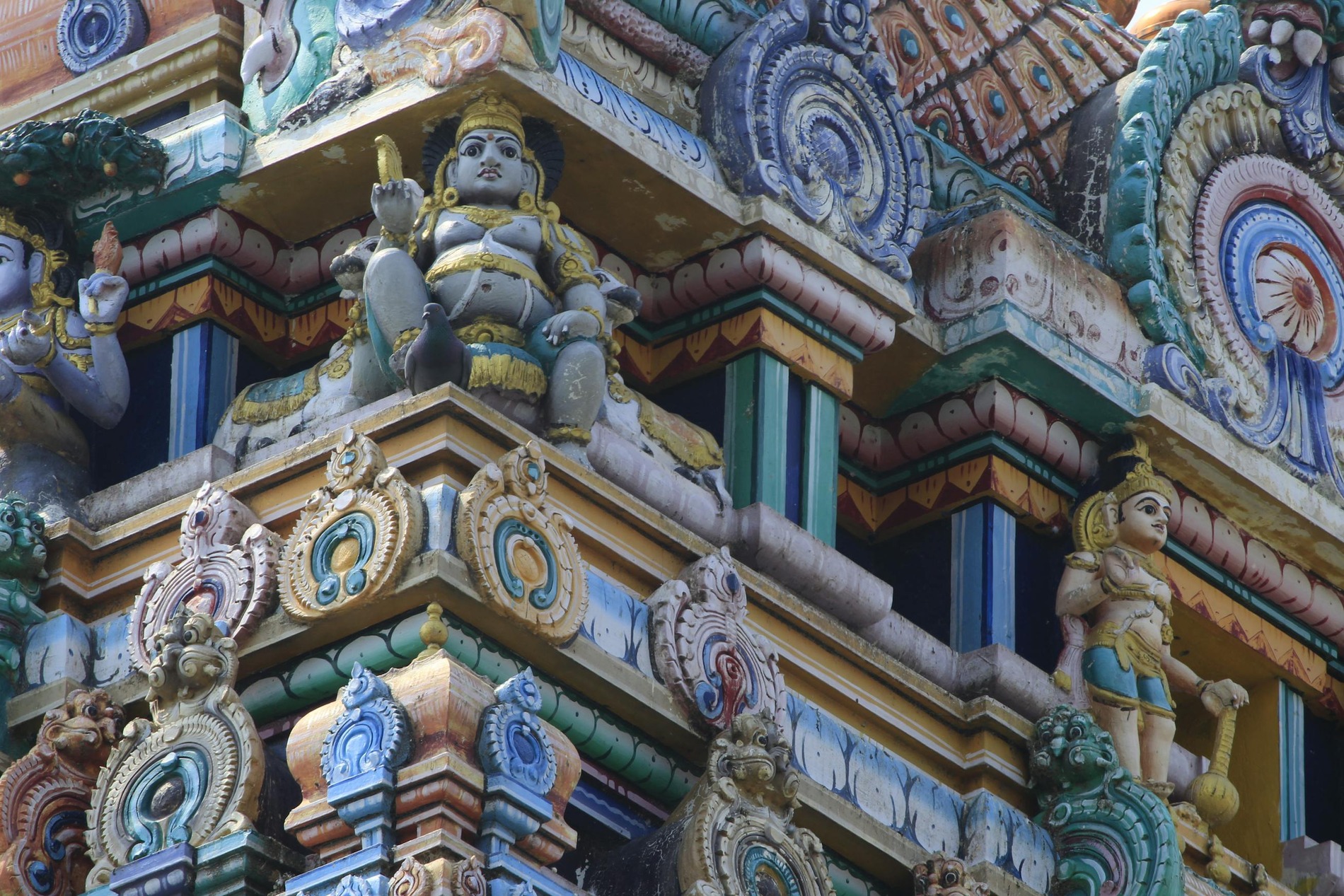
The Meenakshi Amman Temple
Meenakshi Amman of Madurai is by far the most popular goddess in the south. The tall gopuram gateways soaring towards the sky welcome you from far and the experience within is one of both reverence and love for a goddess who won the heart of her people by her courage and grace.
The Meenakshi Amman Temple attracts pilgrims by the thousands every day and its precincts are always crowded with devotees. The air is filled with music and chanting, bells and trumpets. Reflecting the legend of the celestial marriage of Meenakshi and Sundareswarar, many weddings are held here on auspicious days. It is also architecturally one of most beautiful temples of the region with every inch of its stone walls, ceilings and pillars covered with the most exquisite carvings. Within the walls of the precincts are a whole world of halls, shrines, sacred pools, shopping arcades and long pillared corridors and even an art gallery and a museum.
Legends of a Temple
The legends of the Meenakshi Amman Temple go back to the time of the gods and it is said that the first temple was built here by Lord Indra himself. He was on a pilgrimage of atonement and when he prayed to Shiva here he felt the burden of his sins lift. So he built a temple dedicated to Shiva where the delighted god made golden lotuses bloom in the temple pool. The temple is mentioned in the poetry of the saint Sambandarar in the 7th century where he calls the shrine Aalavai Iraivan. Later the Pandya dynasty ruled from Madurai and built the earliest temple and also named the city first Madhurapura and then Madurai. The city was famous for its prosperous traders and also culture. Poets, dancers and musicians came here for the patronage of the Pandyan kings. Many of the creations of the great Tamil literature called Sangam were composed here as the kings held literary gatherings. Many of the poet saints who wrote in praise of Shiva, called the Nayanar poets, composed poems about the temple and these hymns are still sung during the rituals.
In the 14th century the Delhi sultan Allauddin Khalji sent his general Malik Kafur on an expedition to the south mainly to loot the temples and the temple was badly damaged. The first Nayaka king Viswanatha Nayaka began the work of rebuilding in the 16th century under the supervision of his famous chief minister Ariyanatha Mudaliar, whose images still stands in one of the hallways. The work continued into the reign of Thirumala Nayaka who was a great builder. He built the open pillared halls called Vasantha Mandapam and the Kilikoondu Mandapam. Even the people of Madurai contributed to the building by donating bags of rice to feed the worker.
The Sanctum of the Goddess
In the centre of four encircling courtyards stand two shrines that have the sanctums of Meenakshi and Sundareswarar. These are called the Amman and Swamy Koyil and have small intricately carved and gold plated vimanam or the tower over the sanctum. As the lord of the temple Sundareswarar has the larger shrine but by tradition Meenakshi is always worshipped first. Both the temples have a garbha griha or sanctum lit by flickering lamps, where the image stands, clad in silks, glittering with jewels and garlanded with flowers. Before the sanctum is an ardha mandapa or a covered porch from where devotees can pray to the deity and a pradakshina patha, the encircling path they use to go around the sanctum during their puja.
Meenakshi is a standing image of the goddess made of a dark green stone and holding a parrot in one hand. Sundareswarar is worshipped in the form of a Shiva lingam. These are mulamurtis, images that are only worshipped in the garbha griha and never shifted. There are also smaller images that are taken out in procession that are called utsava murtis. These utsava murtis are also worshipped in the sanctum. Meenakshi’s utsava murti shows her alone but Sundareswarar is shown in the Somaskanda form where he sits with the goddess and his son. Here the goddess is called Uma and the son Skanda. The temple has many other sculptures depicting Shiva and the Devi in their many forms including a beautiful free standing sculpture of Shiva as Nataraja, the lord of the dance.
The Temple Enclosure
The temple is surrounded by high walls pierced by a row of pyramidal gopuram gateways. The precinct of the temple has twelve gopurams gateways of various heights and the four tallest ones dominate the skyline of Madurai. These brightly coloured gateways teem with plaster figures of gods, goddesses and demons; people, horses and elephants. The tallest gopuram is the south tower that rises to over 50 metres and has 1500 figures. The hallway called the Ashta Shakti Mandapa at the entrance is lined with shops selling all the requirements for puja like flowers, incense, trinkets, sandalwood and vermillion.The temple is a maze of corridors lined by carved pillars and these showcase some fine examples of painting and sculpture of the Vijayanagar and Nayaka periods. The Mangammal Hall has ceilings painted with the story of the marriage of Meenakshi. Spend some time in the Thousand Pillar Hall that is a veritable forest of pillars that teem with figures and motifs from nature. A dazzling panorama of deities and demons, prancing horses, caparisoned elephants, a strange lion like beast called yalis, indolent apsaras, dancers and musicians.The most beautiful sculpture is that of three free standing figures of Meenakshi, Sundareswara and Vishnu. Here Vishnu as Meenakshi’s brother is giving away the bride and pouring water over the clasped hands of the bride and groom in a scene that can be seen in Hindu weddings even today. Also standing against some pillars are full sized sculpted images of the Nayaka patrons of the temple; tall, majestic warrior kings who are still standing guard over their goddess.
There are many halls and among them is the Kambatadi Mandapa with the image of a seated Nandi bull, Shiva’s vahana in the centre and with a decorated flagpole. The pillars have images of the many aspects of Shiva and Kali. The Meenakshi Nayakkar Mandapam or the thousand pillared Hall built by Ariyanatha Mudaliar has two rows of pillars teeming with carvings and actually contains 985 pillars. An image of Mudaliar riding a horse stands at the entrance of the mandapam. The Viravasantaraya Mandapa is an immense corridor more than 75 metres long lined with pillars creating an extraordinary visual panorama. The Temple Art Museum is also worth a visit with paintings and sculptures on display.
The Golden Lotus Tank or Potramalai Kulam that is within the precinct is said to mark the place where Indra worshipped Shiva and picked the golden lotuses to worship the god. Devotees bathe in the stepped rectangular tank before going in for the rituals of the puja. The tank has a brass column in the middle and is surrounded by a wide colonnade and is a serene corner of the temple with the reflection of the southern gopuram falling on its still waters.
The tank has an interesting literary history. Madurai was the venue of three great literary meets called Sangam in the early years of the first millennium. Legends say that the many manuscripts presented by the poets and philosophers were placed on the waters of the tank and the good ones floated and the others sank. Among the works that won the approval of the goddess were the poetry of the Shaivite saints called Nayanars and the most famous is the collection called Tevaram by the three poet-saints Appar, Sundarar and Sambandarar. Also the famous philosophical treatise called Tirukkural by Tiruvalluvar and his work is read even today.
Wandering around the temple in an atmosphere of both worship and festivity is an unforgettable experience. In Madurai the great romance of Meenakshi and her Handsome Lord is a living celebration every day.
Find Your Perfect Read
Explore More
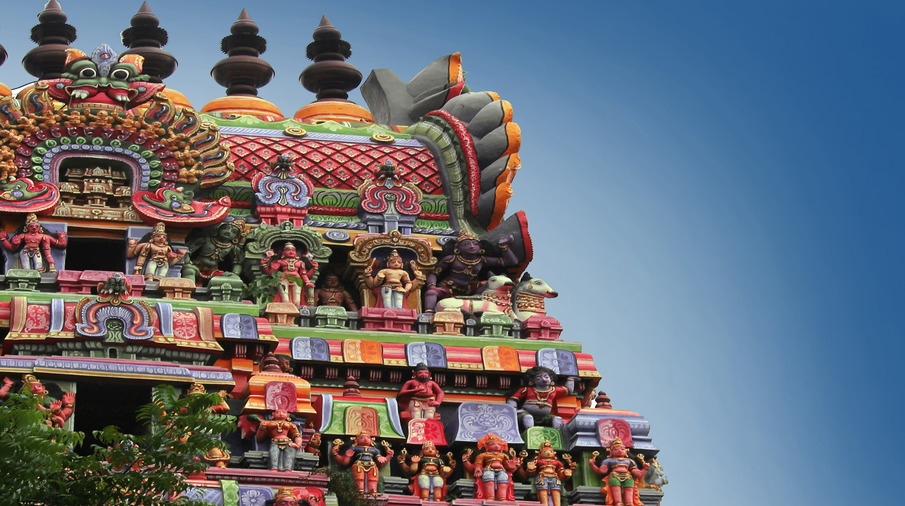
Madurai
Madurai weaves its myths and legends around a beloved goddess, the Devi Meenakshi Amman. For Madurai she is both the queen of the city and also their...
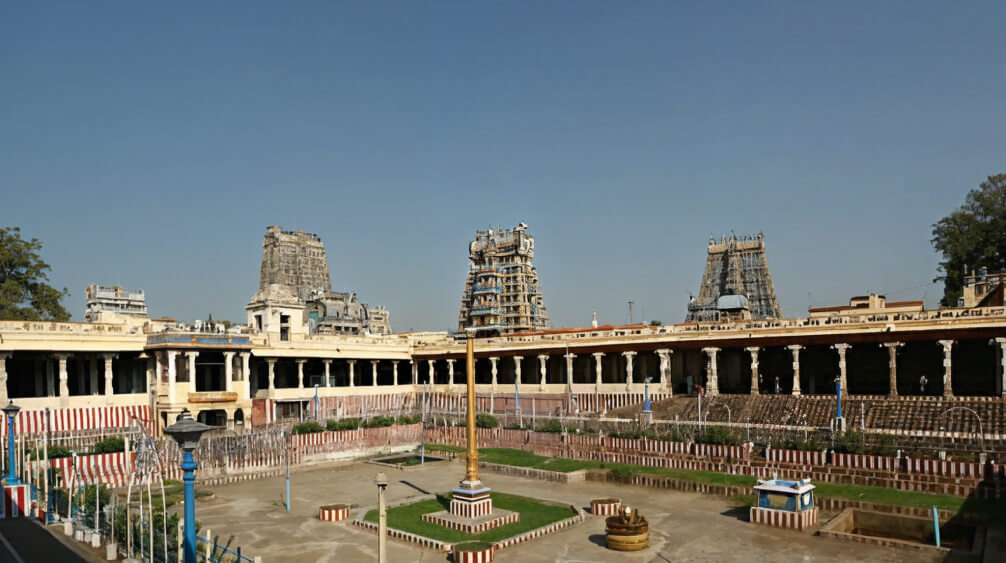
Meenakshi Sundareswarar
Even today the true heart of the city of Madurai is the great Meenakshi Amman Temple that is a celebration of the romance of the Princess...
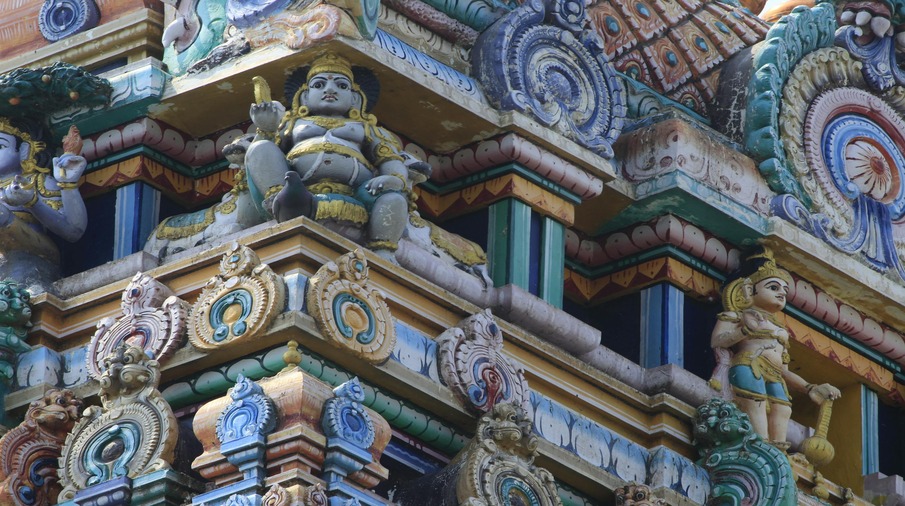
The Meenakshi Amman Temple
Meenakshi Amman of Madurai is by far the most popular goddess in the south. The tall gopuram gateways soaring towards...
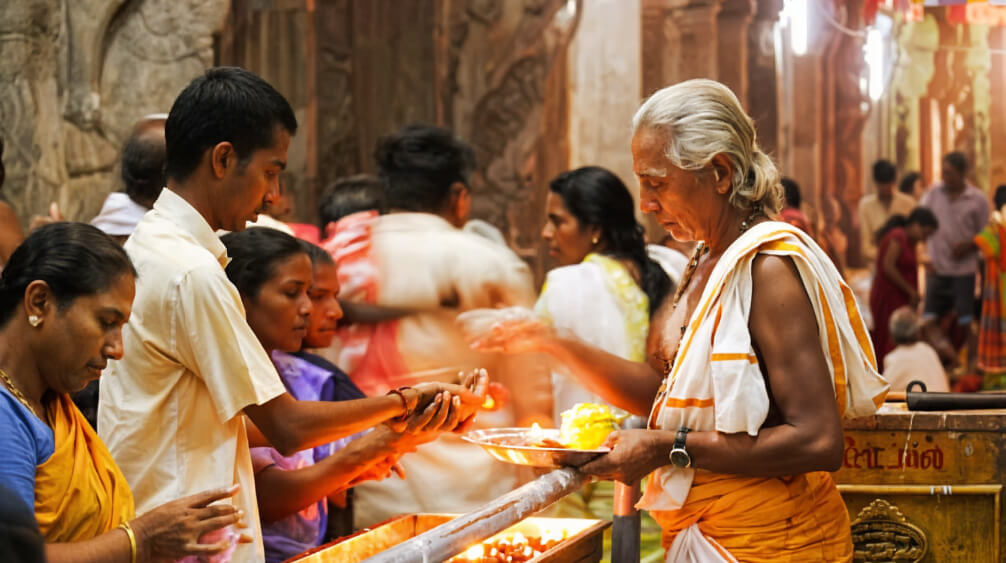
Pujas & Festivals
The puja or the rituals of worship are performed at the Meenakshi Amman Temple between 5:00 am to 12.30 pm and 4:00 pm to 10:00 pm. The temple is open...
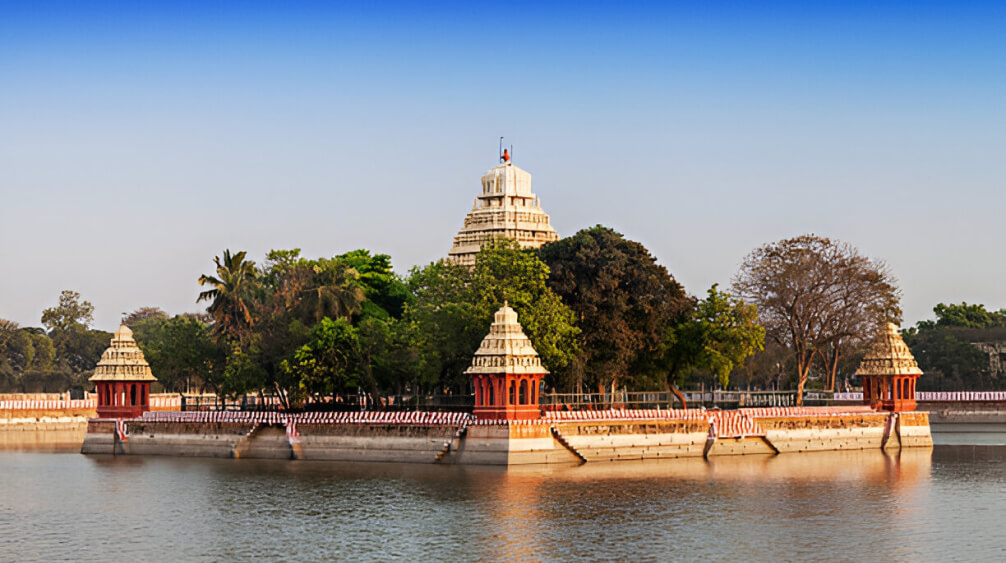
Other Places of Interest
There are a number of temples in Madurai that see pilgrims coming for worship. Also the city has a palace built by the Nayaka kings and a number of mosques, tombs and churches worth a visit...

